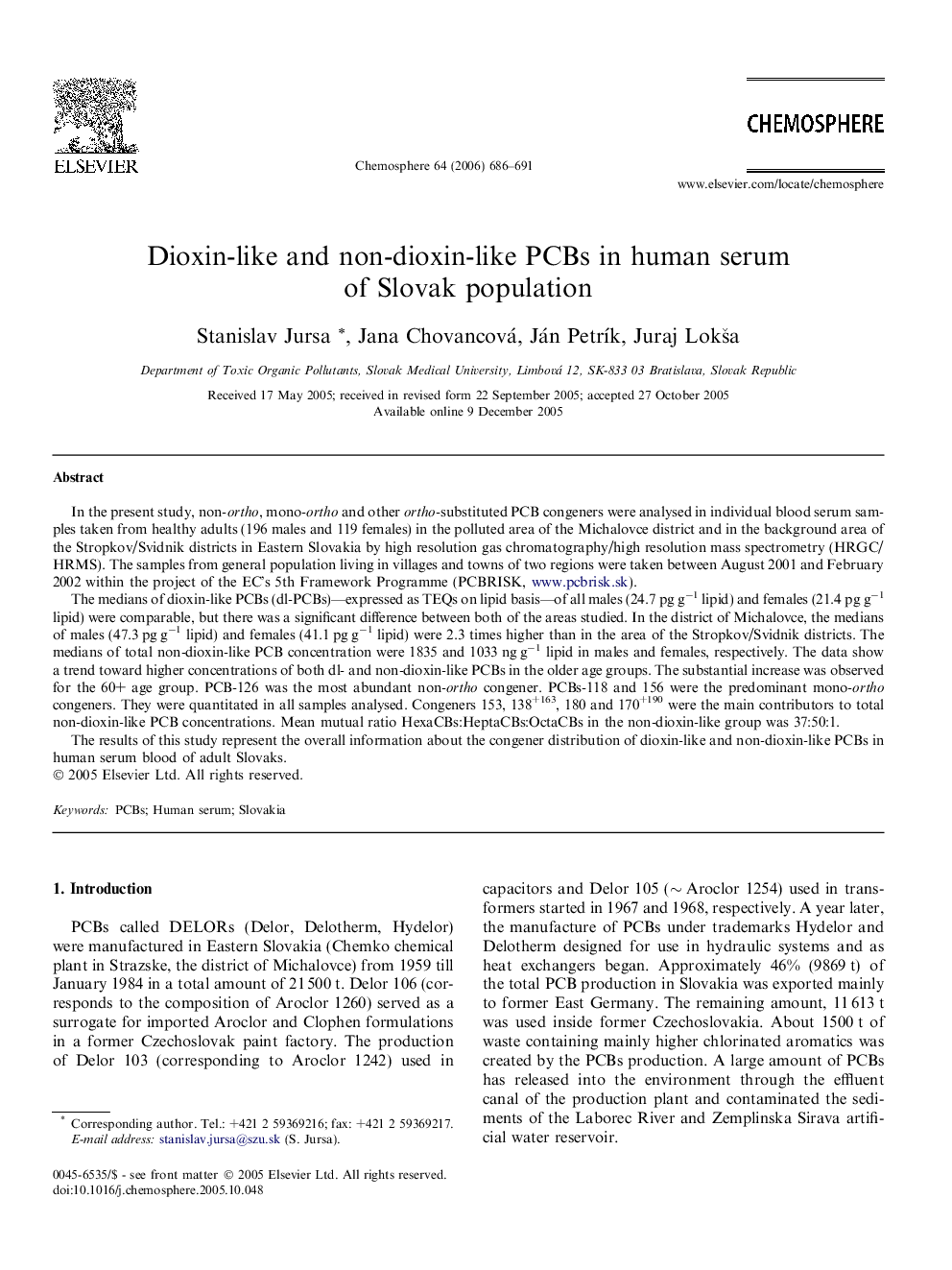| Article ID | Journal | Published Year | Pages | File Type |
|---|---|---|---|---|
| 4416552 | Chemosphere | 2006 | 6 Pages |
In the present study, non-ortho, mono-ortho and other ortho-substituted PCB congeners were analysed in individual blood serum samples taken from healthy adults (196 males and 119 females) in the polluted area of the Michalovce district and in the background area of the Stropkov/Svidnik districts in Eastern Slovakia by high resolution gas chromatography/high resolution mass spectrometry (HRGC/HRMS). The samples from general population living in villages and towns of two regions were taken between August 2001 and February 2002 within the project of the EC’s 5th Framework Programme (PCBRISK, www.pcbrisk.sk).The medians of dioxin-like PCBs (dl-PCBs)—expressed as TEQs on lipid basis—of all males (24.7 pg g−1 lipid) and females (21.4 pg g−1 lipid) were comparable, but there was a significant difference between both of the areas studied. In the district of Michalovce, the medians of males (47.3 pg g−1 lipid) and females (41.1 pg g−1 lipid) were 2.3 times higher than in the area of the Stropkov/Svidnik districts. The medians of total non-dioxin-like PCB concentration were 1835 and 1033 ng g−1 lipid in males and females, respectively. The data show a trend toward higher concentrations of both dl- and non-dioxin-like PCBs in the older age groups. The substantial increase was observed for the 60+ age group. PCB-126 was the most abundant non-ortho congener. PCBs-118 and 156 were the predominant mono-ortho congeners. They were quantitated in all samples analysed. Congeners 153, 138+163, 180 and 170+190 were the main contributors to total non-dioxin-like PCB concentrations. Mean mutual ratio HexaCBs:HeptaCBs:OctaCBs in the non-dioxin-like group was 37:50:1.The results of this study represent the overall information about the congener distribution of dioxin-like and non-dioxin-like PCBs in human serum blood of adult Slovaks.
